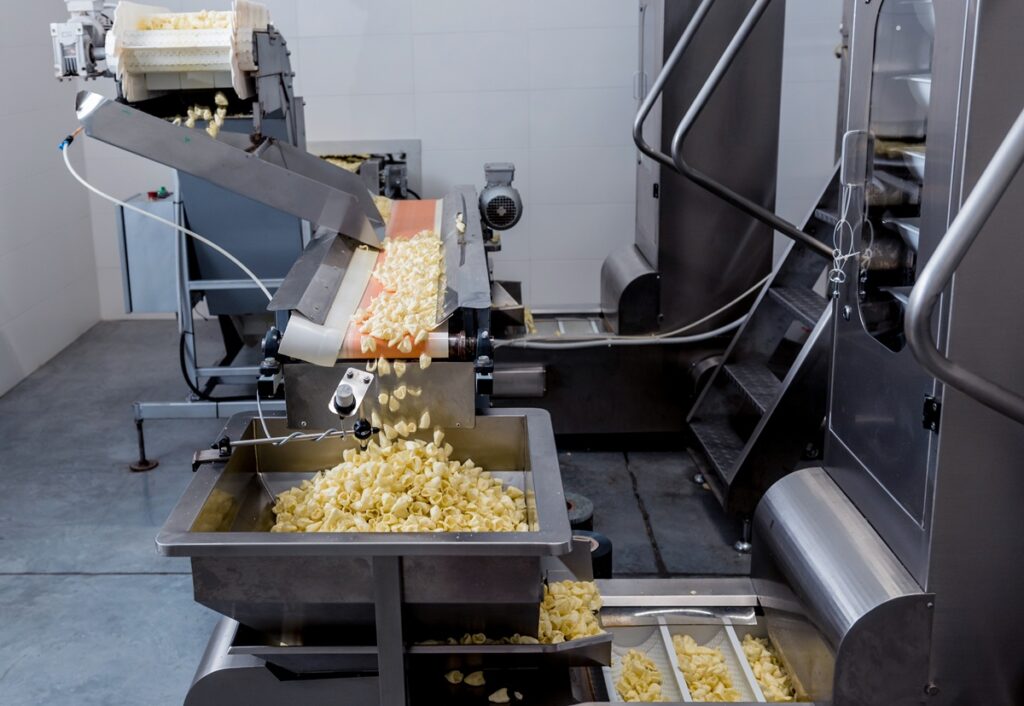Once seen as simple workhorses, conveyors have become intelligent, connected, and energy-efficient assets. In a climate defined by high energy costs, new recycling laws, and labour shortages, the humble conveyor is now central to compliance, cost control, and sustainable productivity.
The conveyor line was once the least glamorous part of food production—quietly moving ingredients and finished goods between machines. But in 2025, it has become a cornerstone of modern manufacturing strategy.
Rising energy prices, new Simpler Recycling laws, and the full enforcement of Extended Producer Responsibility (EPR) have turned conveyors into essential compliance tools. Lines that once ran constantly now run intelligently. Motors switch off when not in use. Sensors record energy consumption. Every belt and roller is part of a data network designed to reduce waste, cut costs, and protect profit.
The food industry’s operational challenges—energy efficiency, hygiene, labour shortages, and sustainability—are now being solved not just at the oven or filler, but between them.
Energy Efficiency Meets Engineering Intelligence
Conveyors are major energy consumers, so manufacturers are turning to smarter systems that deliver real savings.
- Permanent-magnet motors use up to 50% less electricity than conventional drives.
- Zero-pressure accumulation divides lines into zones that only move when a product is present, preventing empty running and reducing wear.
- Heat-resistant and low-friction materials lower drag and maintenance demands, extending belt life.
With EPR pushing companies toward lighter, more fragile packaging, conveyors must also handle eco-friendly materials with precision. Smooth transfers, soft-grip belts, and programmable speed control protect recyclable or paper-based packs from tearing—helping businesses meet sustainability targets while maintaining throughput.
Smart Conveyors: Data at the Core
The modern conveyor is more than mechanical—it’s digital.
Embedded IoT sensors monitor vibration, belt tension, and motor temperature in real time. When linked to a factory’s MES or ERP platform, this data feeds predictive-maintenance software capable of detecting anomalies before they cause failure.
Instead of a breakdown halting production, the system issues an alert: “Motor 3—packing hall—shows 90% bearing wear. Replace within 72 hours.” This kind of foresight eliminates unplanned downtime, improving reliability and overall equipment effectiveness (OEE).
For food manufacturers running 24/7, reliability is now defined not by how rarely a line stops—but by how accurately you can predict when it will.
From Ergonomics to Automation
Labour shortages continue to challenge the sector, shifting the focus from ergonomics to automation. New conveyors are built to be robot-ready, delivering products in perfect position and orientation for robotic or cobot pick-and-place operations.
Overhead AI vision systems mounted above belts handle tasks once done manually: identifying underfilled pies, misaligned biscuits, or mislabelled packs, and activating diverters to send products to the correct station. Together, conveyors and robots now form a seamless, self-adjusting ecosystem that keeps production moving efficiently even with fewer human operators.
Hygiene Redefined
The fundamentals of hygienic design remain—sloped surfaces, stainless steel, and no crevices—but time is now the defining factor. Modern tool-less disassembly allows belts, rails, and drip trays to be removed by hand in minutes. Some systems incorporate self-draining frames or automated cleaning cycles that slash wash-down time from hours to minutes, freeing valuable production capacity and improving safety compliance.
Cleanability, once a compliance issue, is now a competitive advantage.
The Future in Motion
Conveyors have quietly evolved from passive transporters into active enablers of efficiency, sustainability, and intelligence. They collect data, conserve power, and integrate seamlessly with robots and quality systems.
For manufacturers under pressure to meet legal, environmental, and economic demands, these systems are more than mechanical links—they are the connective tissue of the smart factory.

